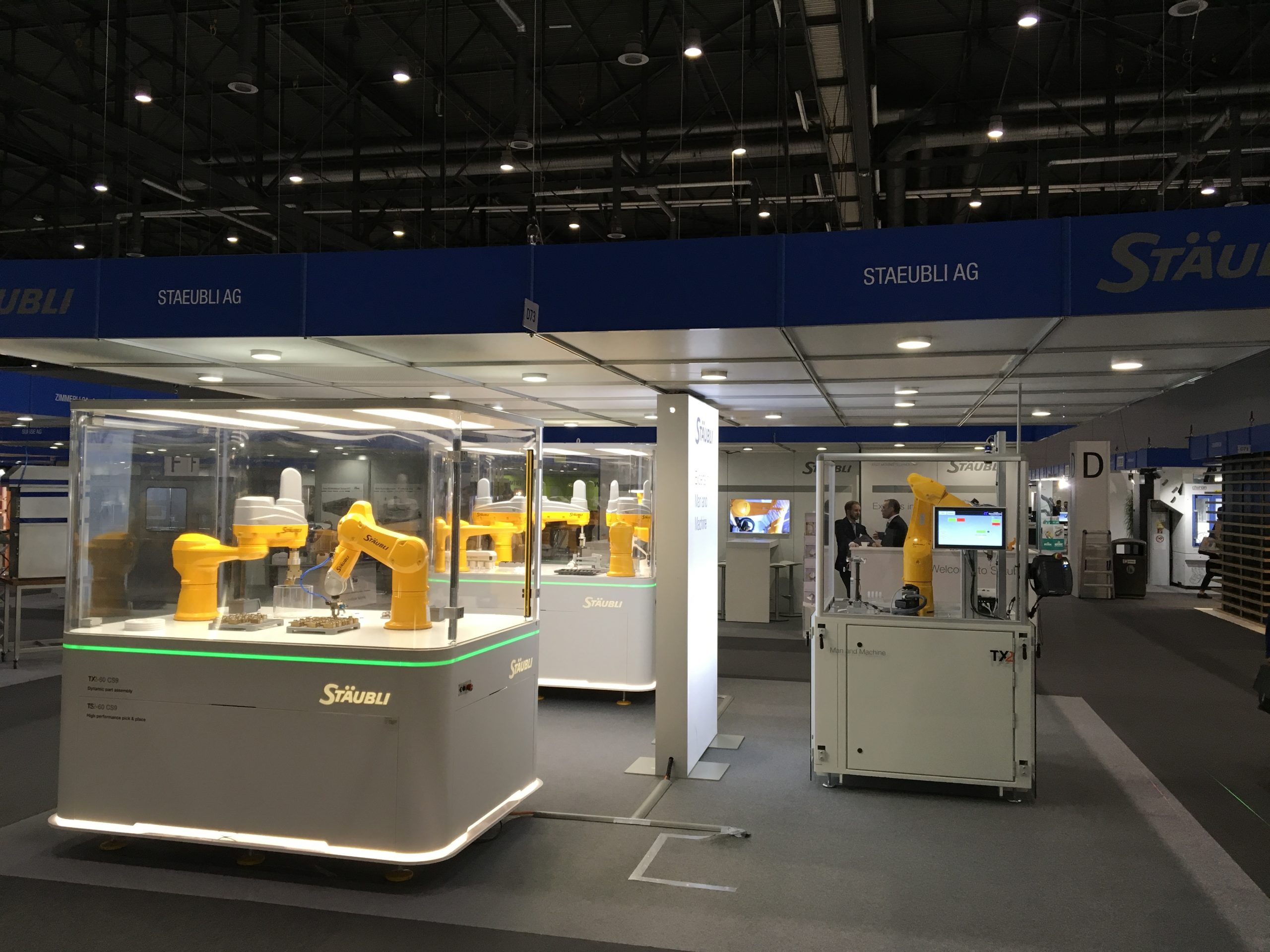
EPHJ: Big industry seen at the small scale
EPHJ-EPMT-SMT is the name of an annual trade show built around what is referred to as “microtechnology” because it’s all about the small scale – tiny but essential components.
Currently in its second day, the conference is held in Geneva, Switzerland, and the vast majority of the 500 or so exhibitors – about 80 per cent – are from the watchmaking sector.
The Swiss watchmaking industry is still massive, despite historical challenges from Japanese watchmakers in the 1960s and ’70s, and lately, disruptive innovations by makers of smart watches, such as Apple.
Mechanical watches are still desirable items, and because they are no longer in demand in vast quantities globally and therefore do not benefit from economies scale found in mass manufacturing, they tend to be expensive to buy.
Often assembled individually by hand by one or a small group of crafts people, mechanical watches are often priced in the thousands of dollars. And if we’re talking about limited-edition designs, which perhaps use novel materials and components, you could be looking at an outlay of tens of thousands of dollars for one watch. And while the word “design” often refers to how something looks, in the world of watches, it’s all about precision.

High price for high precision
If we want to talk about high precision, we need to talk about measurement – or “metrology”, as it is known in industry. At EPHJ, I saw a number of interesting measurement technologies, including one produced by a company called Mitutoyo.
The device uses a stylus with a pyramid-shaped diamond tip with a depth of 2 microns – 2 millionths of a metre. This instrument is moved by an automated machine and the diamond-tipped stylus glides over the surface of the component it is evaluating.
In the demonstration I saw, the stylus was checking the smoothness of the surface of a pin or bar – the component attached to the sides of a watch case and on which watch straps are attached.
The Mitutoyo device uses a super-sensitive piezoelectric system too complicated to explain that detects any and every flaw in the surface of a component.
“These kind of flaws are impossible for the human eye to calculate or maybe even detect,” says Jean-Philippe Chadrin, technical adviser at Mituyoto. “This kind of system is used in watchmaking a lot.”
The computer the stylus is attached to can map out a surface and reveal all sorts of peaks and valleys, where the human eye may only see smoothness and can only guess at the flaws there might be.
However, there are some instances where a component cannot be measured with a machine, and a human eye is required, according to Sinan Akyol, sales adviser at Louis Belet, a maker of tools – which look like drill bits – for cutting and finishing metal components.
Louis Belet’s tools have tolerances of 0.001 to 0.003 microns, which are basically the smallest numbers I heard at EPHJ. How anyone can spot flaws at such small scales is beyond me, but experience still counts for a lot in traditional manufacturing industries.
“Sometimes the component is too small and delicate to be tested and measured using a device,” says Akyol. “Having an instrument measure its smoothness might damage it.
“In these instances, you can only do it with a human eye, and there are a lot of experienced watchmakers who are capable of making these kinds of judgments through visual examination.”
This is an interesting conundrum. Do you allow a machine to make important decisions relating to precision, smoothness, alignment and so on, or should the human expert be the final judge?

Precise alignment or slightly off, you decide
I used to design print newspapers and magazines years ago using software such as QuarkXpress and InDesign, which gave you the opportunity to place and perfectly align objects on a page – pictures, text, graphics, and so on – with mathematical precision.
However, a colleague was of the view that it should always be the human eye that is the final arbiter of what looks “right”. In other words, two items can be aligned in a mathematically precise way, but if they don’t look aesthetically pleasing to the human eye, then a slight adjustment is acceptable.
Meaning, it might be mathematically less precise, but looks better. The human mind tends to like mathematical precision, but sometimes, what might be called “flourishes” are required.
And speaking of flourishes, Chiron is a company which makes machines that are used to make items of jewellery. A spokesperson for the company says the company uses Louis Belet tools and has integrated them into a machine that can produce extremely precise machining of components.
And while the demonstration machine was being used to produce jewellery at the EPHJ show, Chiron also supplies high-precision components to the automotive and aerospace sectors.
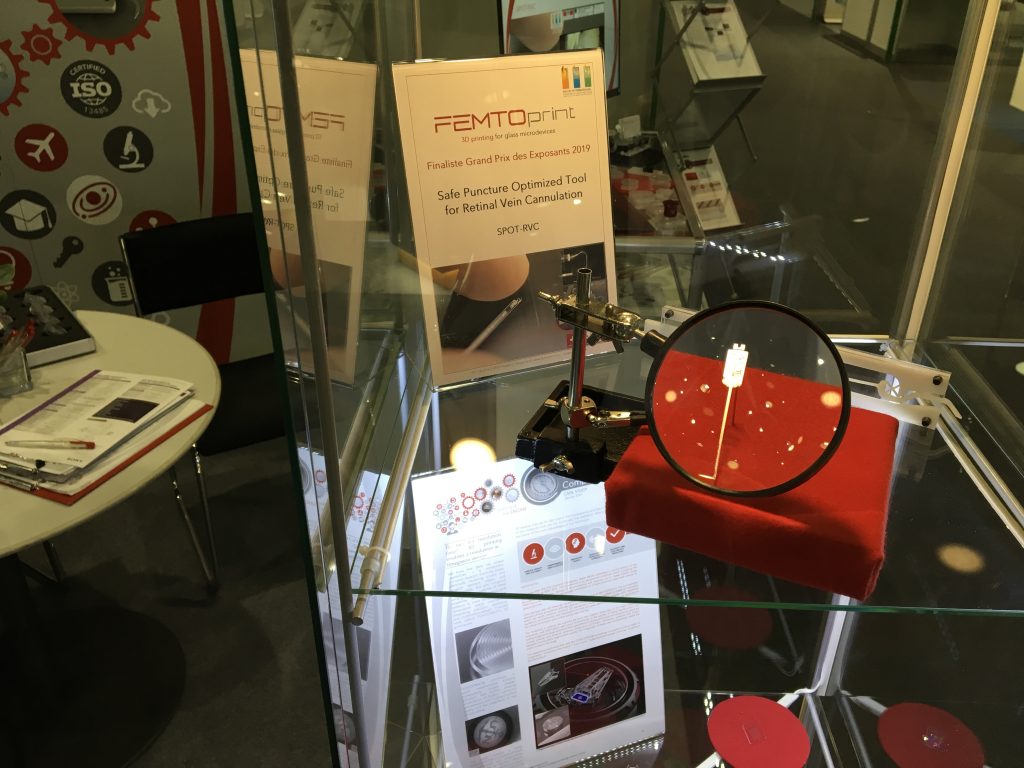
Complex machinery to make simple parts
To achieve the level of precision required, machines which integrate robotics are required.
At EPHJ, there are a number of companies which build and supply complex machines which are used by their customers to make watch cases, main plates, bridges, and other components.
Precitrame Machines is one of them.
“This machine we are demonstrating at EPHJ integrates two robots and 12 workstations,” says Yves Béguelin. “The first robot prepares the part – which in this example is a watch case – from a raw block of material.
“Then it passes it through to the next stage, where the second robot continues the process while the workstations rotate beneath it.”
The demonstration machine is configured for one application – making watch cases, but Precitrame customises its machines for individual clients, depending on what they need it for.
The company supplies machines to a variety of sectors, including watchmaking, automotive, and aerospace.
“Our machines are used worldwide and have produced many millions of components in many industries,” says Béguelin.
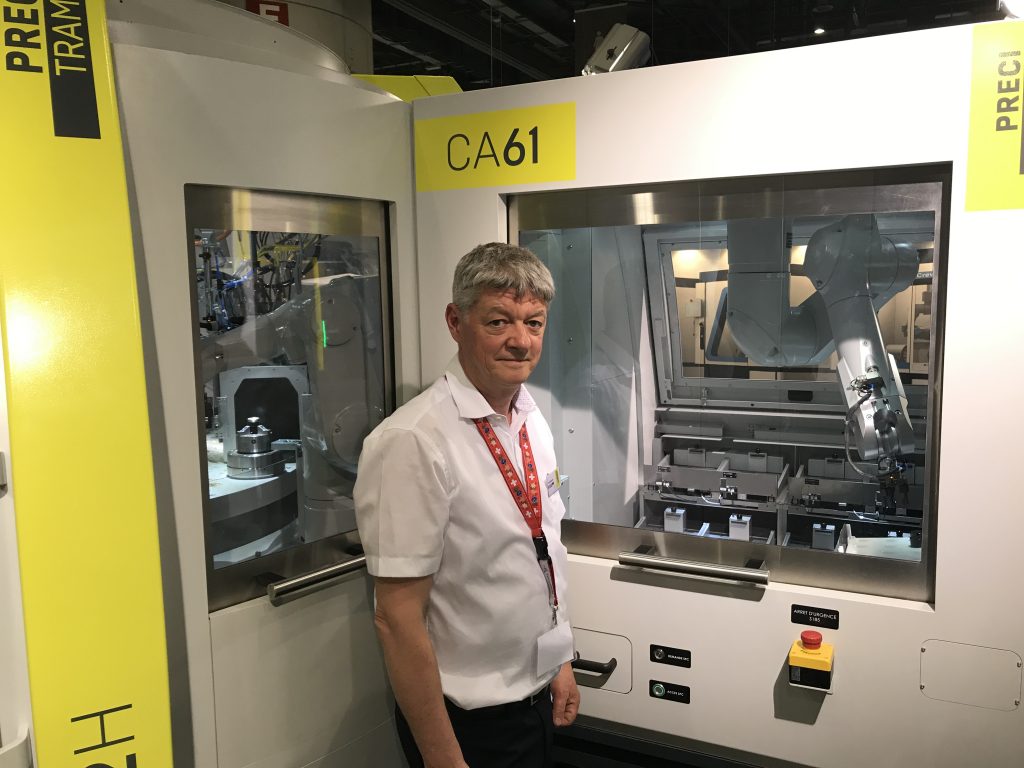
Where are the robots?
The robotic arms integrated into the Precitrame machine are supplied by Stäubli, one of the leading manufacturers of industrial robots in the world.
Being a Swiss company, it’s understandable that Stäubli has a significant presence at EPHJ (main picture). Moreover, the company probably has the largest market share in the watchmaking trade.
Jorge Oliveira, Stäubli’s sales adviser at the show, says the robots the company is showing are not specifically designed for watchmaking or jewellery making or anything. They are standard Stäubli industrial robotic arms.
The main new thing about them is that they are now all collaborative.
Collaborative robots are ones which can be used by humans directly. Unlike traditional robot arms, they do not need to be caged off because of safety fears.
And rather than develop a specialised collaborative robot, Stäubli has made all its robots collaborative by introducing a variety of safety measures.
Laser sensing systems enable the robot to detect if a human is within close proximity or even within touching distance, and it can modify its speed and other behaviours accordingly, thereby becoming less dangerous potentially.
“Here at EPHJ, Stäubli is demonstrating its compact robots,” says Oliveira. “All our 6-axis robots are now collaborative. We use a colour-coded system which lets human users and the robot know where they are in relation to each other – green is for close, and red is for closer, and then a direct touch stops the robot.
“I would say at least 80 per cent of watchmaking companies use Stäubli robots, so we are a leader in the market.
“I think one of the main reasons is the precision of our robots – extremely accurate with a repeatability of 0.01 mm.”
Another robot company which has a presence at the show is a startup called Mecademic, the maker of a tiny robotic arm that can easily fit on a desktop. In fact, its base can fit into the palm of a human hand.
The Mecademic robot seems ideal for making small components, but it’s too early to tell how much of an impact it will have on the market. For now, it is certainly a popular choice as a demonstration model, as can be seen from the numerous stands that have it on display.
Another exhibitor with robots at its stands is TCI Engineering, a company which uses a lot of robotics in the solutions it provides to its customers.
The company’s managing director, Itzhak Savariego, says robots are not as widely utilised as they could be and provided an example.
“Watch crystals – the glass over the face – are polished by humans who hold it against a spinning diamond polisher,” says Savariego. “This is a labour-intensive process and could in future be done by a robot in many more companies.
“For now, the largest Swiss manufacturers are already adopting robots for such tasks and a lot of the work that used to be done in China is being repatriated back to Switzerland as a result of robots.”
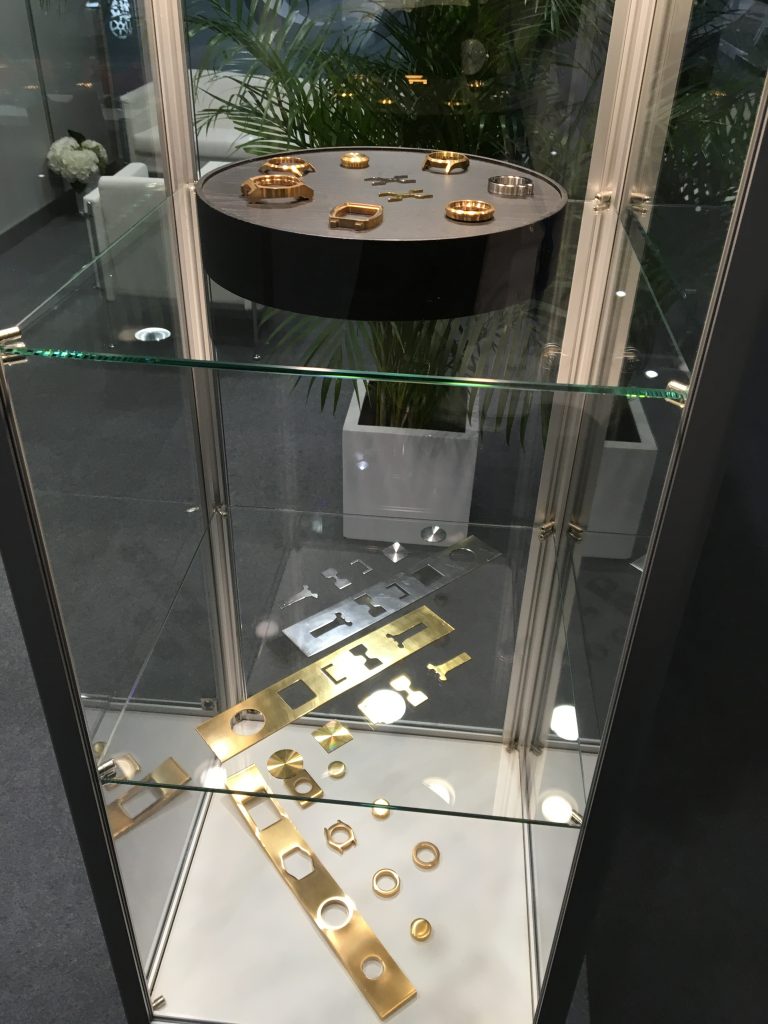
Competing with new innovations
While China might be a competitor in many different manufacturing sectors for just about every country, Japan was and still is a direct competitor to Switzerland in the microtechnology industry, specifically in watchmaking.
It follows, then, that Japan appears to be the only other country which has a significant presence at EPHJ, with a stand representing the region in the country that is considered the main hub for the watchmaking industry – Nagoya, about 200 km south-west of Tokyo.
Moreover, individual companies from Japan are also showcasing their innovations at the event, one of them being Yuki Precision, which is partnering with two other companies in Japan – including designer Hajime Asaoke – to produce an exclusive, original mechanical watch that will retail for around $65,000.
Such prices might seem outlandish to people unfamiliar with the high-end watchmaking sector, but some watches can fetch literally millions of dollars.
Staying in this price range, however, I found a company called FemtoPrint, which made the components for a Ulysse Nardin watch.
Ulysse Nardin is one of the highest of high-end watchmakers, and the watch made using FemtoPrint components retails for close to $100,000.
The interesting thing about this watch is that a lot of the components are made from glass. So, where you’d find metal gears inside other watches, you would find glass gears inside watches made with FemtoPrint components.
“We use fused silica, which is the purest form of glass, for such components,” says Nicolette Casanova, CEO of FemtoPrint, which won an award for the most innovative product at EPHJ.
As well as supplying components for watchmaking, FemtoPrint designs instruments for the medical sector.
At EPHJ, it was demonstrating a complex glass syringe type of device which can be used for extremely small operations on the eye.
“The instrument can go into a vein in the eye, puncture the vein, and either drain fluid or deliver a drug,” says Casanova.
FemtoPrint uses what sounds like a highly unusual type of 3D printing technique, which includes a subtractive stage, but more about this in a later article.
And while we have only lightly touched on the subject of novel materials, it’s worth noting that many new products are only made possible by the inventions of new materials.
This is why companies such as industrial giant ThyssenKrupp’s materials business has a stand at EPHJ.
But even now, after thousands, possibly tens of thousands of years, as the most desirable of materials, gold and silver are still highly sought after, and not just in watch- and jewellery-making.
Laurent Enguehard, an executive at Steiger, says: “A lot of this show is about watchmaking, but we supply gold, silver and other materials for coating and other applications to the automotive, aerospace and other sectors.”
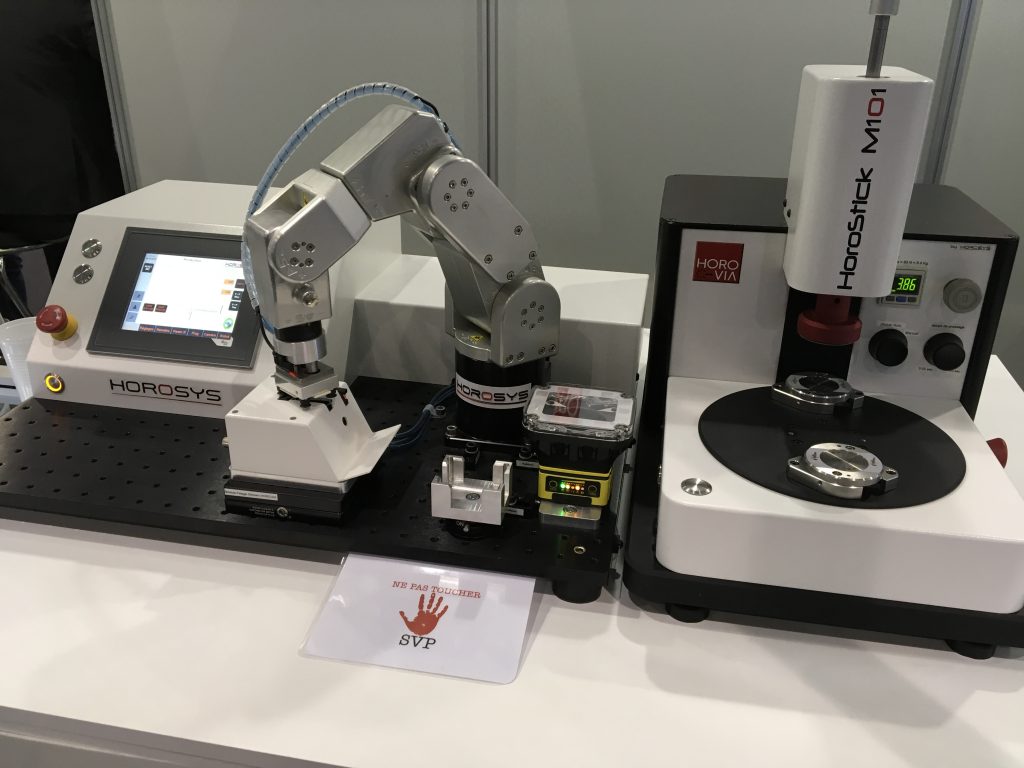
The return of the artisan
The image of the lone artisan working away at making a watch or a piece of fine jewellery may have all but faded away, with almost all successful manufacturing companies being fairly large enterprises.
But with the introduction of tools such as the Mecademic robot, some might say the artisan is ready to make a comeback.
The Mecademic 500 is being integrated into a solution being demonstrated by a company called Horovia, which makes the numbers and other bits you see on a watch face, or dial.
Claude Gertler, Horovia’s director, says: “We use a variety of materials including nickel, mother of pearl, opal and so on.
“We’ve been experimenting with new systems of production and assembly and I worked with an engineer to develop a robotic system for placing our watch dial components onto the dial.”
The engineer in question is François Cavin, project chief at Horosys, which is exhibiting at EPHJ alongside Horovia.
“The robotic systems we have designed include one which can take the sticker off the dial components that Horovia makes and then place those components onto the watch dial,” says Cavin.
“We are developing ‘desktop factory’ concepts because the Mecademic robot is the first small robot which is accurate enough for high-precision work in industries such as watchmaking.”
And while tables like the ones below will probably always be used in watchmaking, we may increasingly see a robot perched on the end of it.

